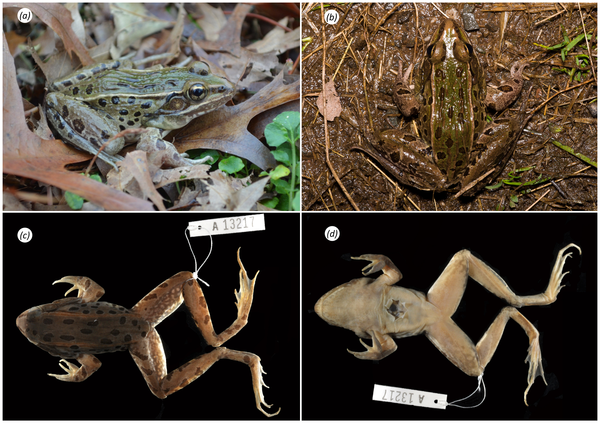Abstract
A well-supported and well-resolved phylogeny based on a concatenated data set from one mitochondrial and two nuclear genes, six morphological characters, and nine color pattern characters for 44 of the 50 species of the Southeast Asian Rock Geckos (genus Cnemaspis Strauch, 1887) is consistent with the previous taxonomy of Cnemaspis based solely on morphology and color pattern. Cnemaspis is partitioned into four major clades that collectively contain six species groups. The monophyly of all clades and species groups is strongly supported and they are parapatrically distributed across well-established, biogeographical regions ranging from southern Vietnam westward through southern Indochina, southward through the Thai-Malay Peninsula, then eastward to Borneo. Eight new species (Cnemaspis omari sp. nov. from the Thai-Malaysian border; C. temiah sp. nov. from Cameron Highlands, Pahang, Malaysia; C. stongensis sp. nov. from Gunung Stong, Kelantan, Malaysia; C. hangus sp. nov. from Bukit Hangus, Pahang, Malaysia; C. sundagekko sp. nov. from Pulau Siantan, Indonesia; C. peninsularis sp. nov. from southern Peninsular Malaysia and Singapore, and C. mumpuniae sp. nov. and C. sundainsula sp. nov. from Pulau Natuna Besar, Indonesia) are described based on morphology and color pattern and all but C. sundagekko sp. nov. are included in the phylogenetic analyses. Cnemaspis kendallii is polyphyletic and a composite of six species. An updated taxonomy consistent with the phylogeny is proposed for all 50 species and is based on 25 morphological and 53 color pattern characters scored across 594 specimens. Cladogenetic events and biogeographical relationships within Cnemaspis were likely influenced by this group’s low vagility and the cyclical patterns of geographical and environmental changes in Sundaland over the last 25 million years and especially within the last 2.5 million years. The phylogeny indicates that nocturnality, diurnality, substrate preferences, and the presence of ocelli in the shoulder regions have evolved independently multiple times.
Keywords: Cnemaspis, Gekkonidae, Southeast Asia, new species, Sunda Shelf, biogeography, phylogeography
Grismer, L. L., Perry J. L. Wood, Shahrul Anuar, Awal Riyanto, Norhayati Ahmad, MohD. A. Muin, Montri Sumontha, Jesse L. Grismer, Chan K. Onn, Evan S. H. Quah & Olivier S. A. Pauwels. 2014. Systematics and Natural History of Southeast Asian Rock Geckos (genus Cnemaspis Strauch, 1887) with Descriptions of Eight New Species from Malaysia, Thailand, and Indonesia. Zootaxa. 3880(1): 1–147.






























_from_Thailand-new_combination_and_new_records.png)


















